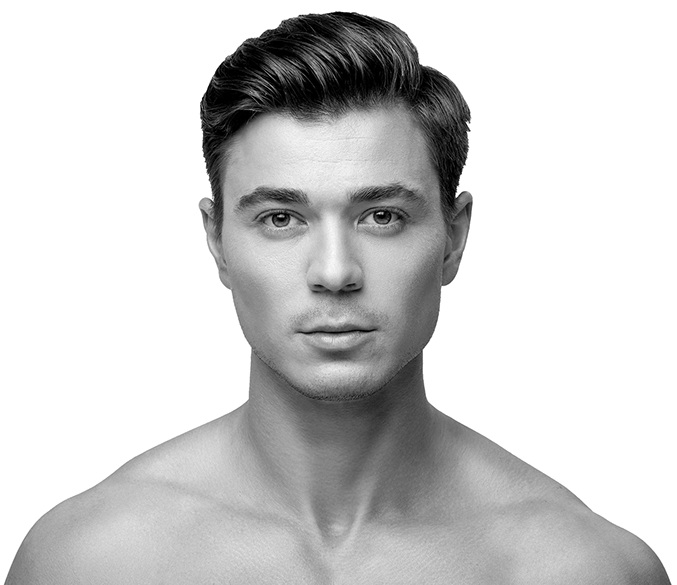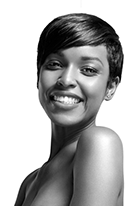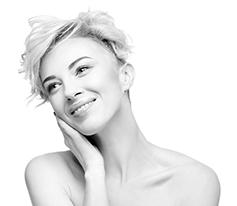Success of Users
Know Yourself
Science and Patakara
WHAT
WHO
HOW
Success of Users
Know Yourself
Science and Patakara
Success of Users
Know Yourself
Science and Patakara

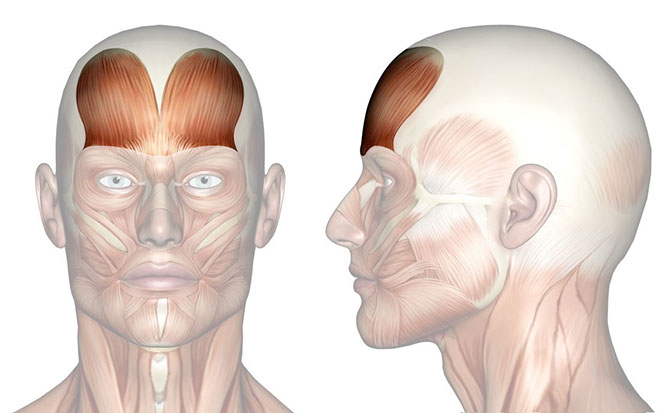
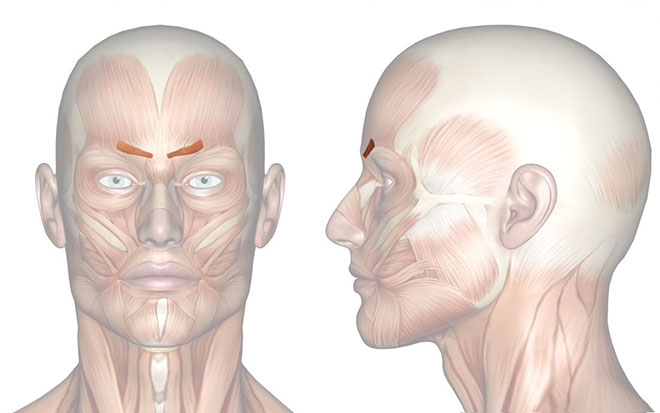
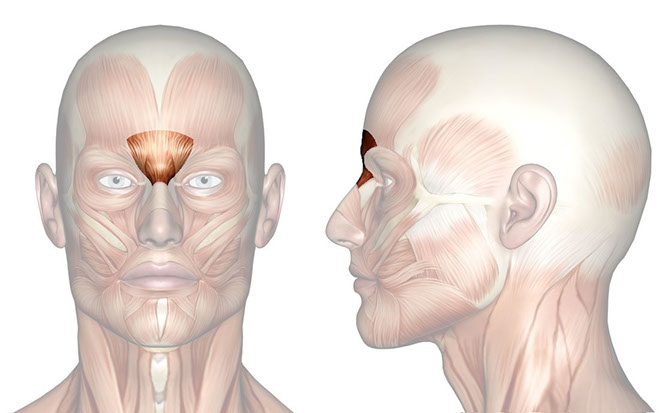
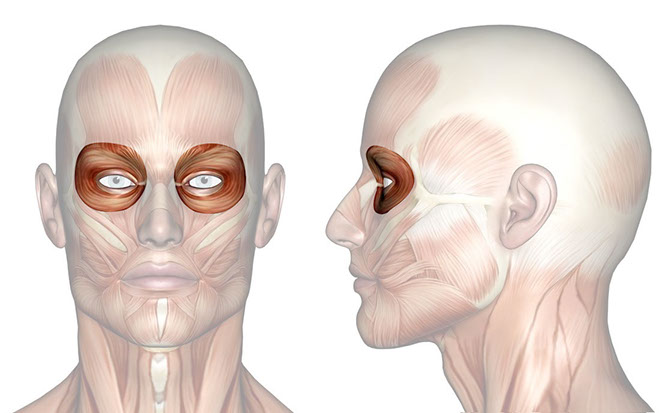
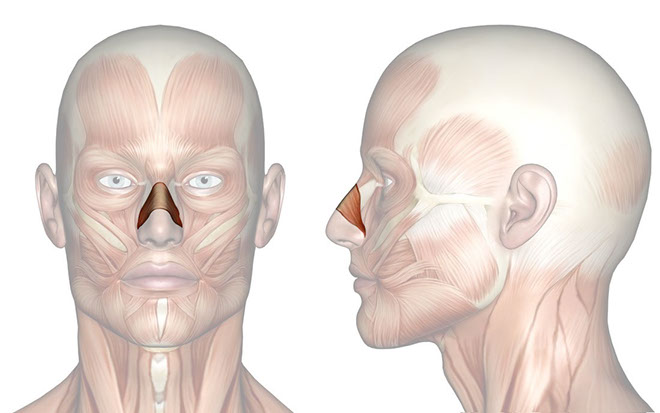
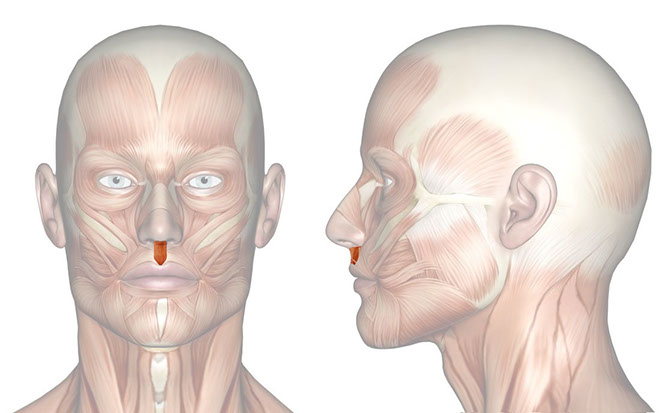
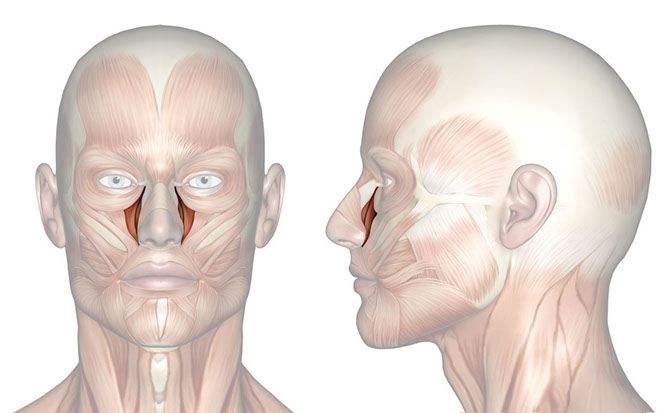
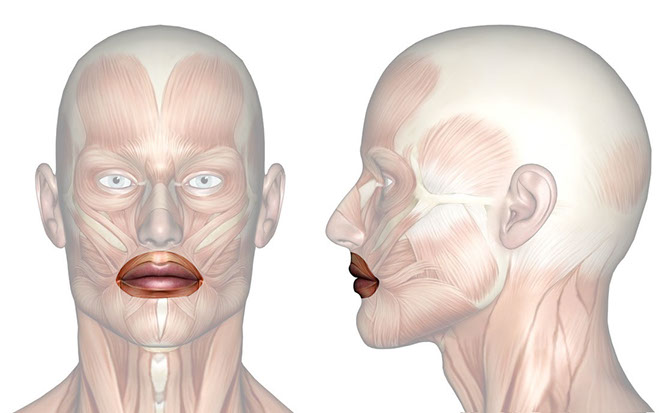
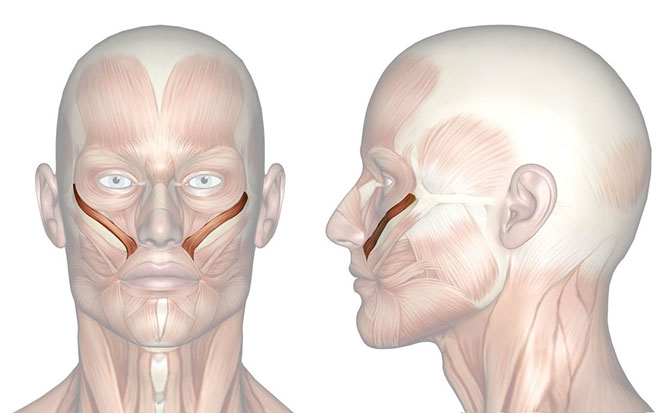
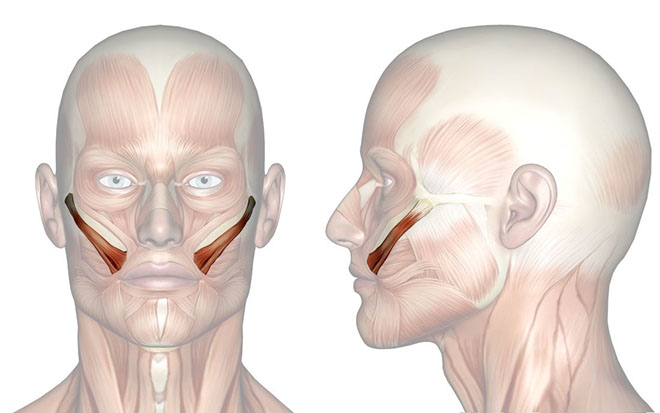
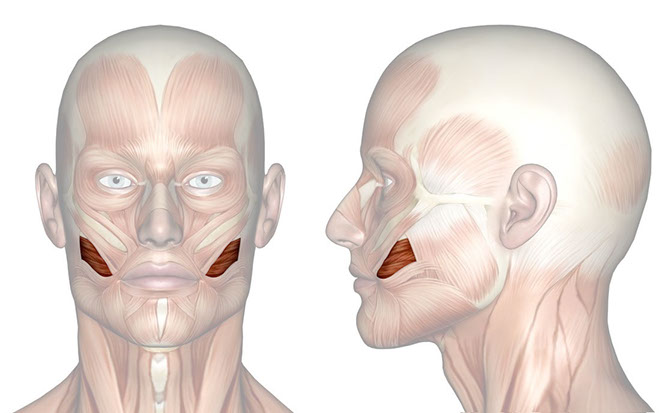
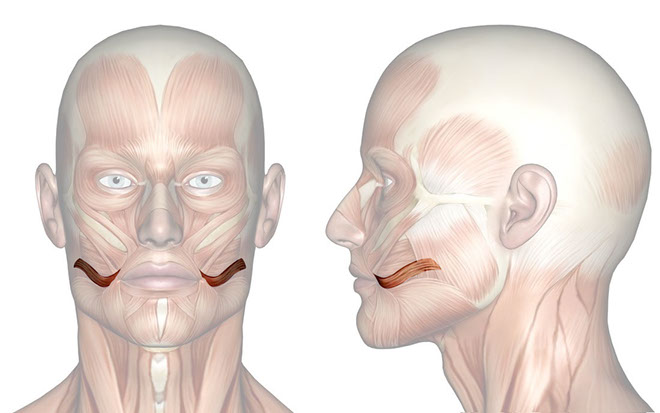
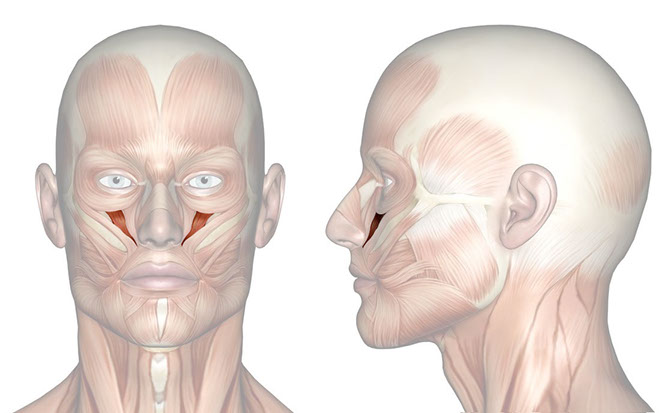
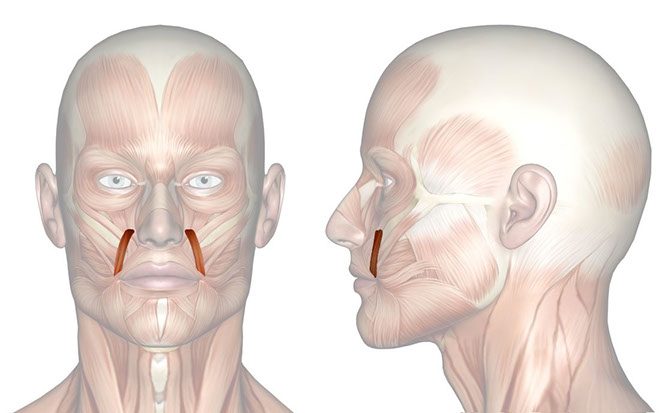
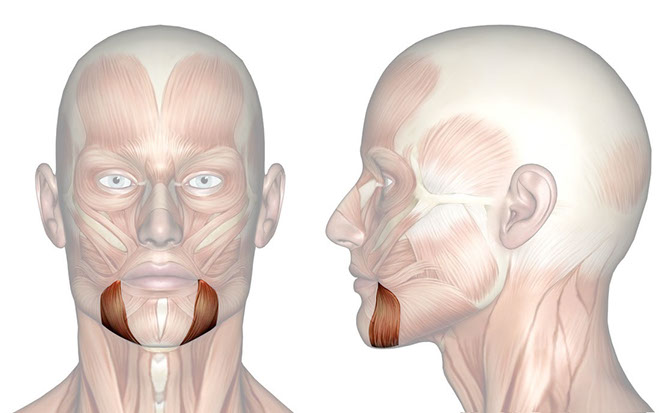
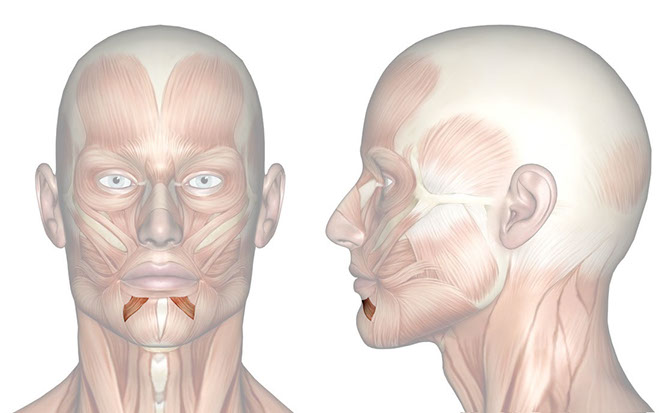
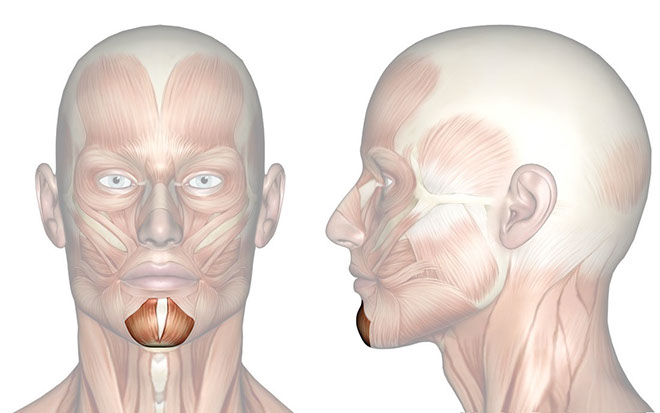
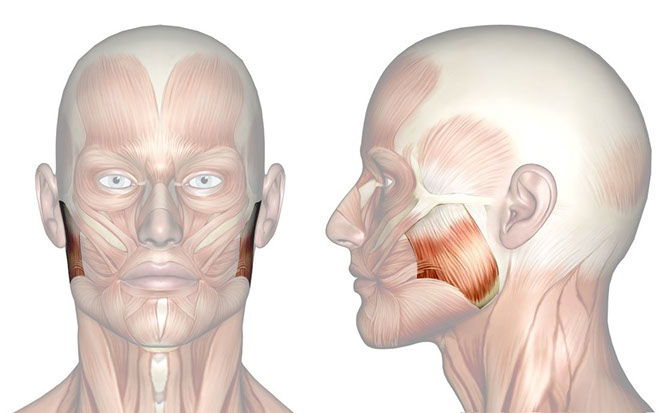
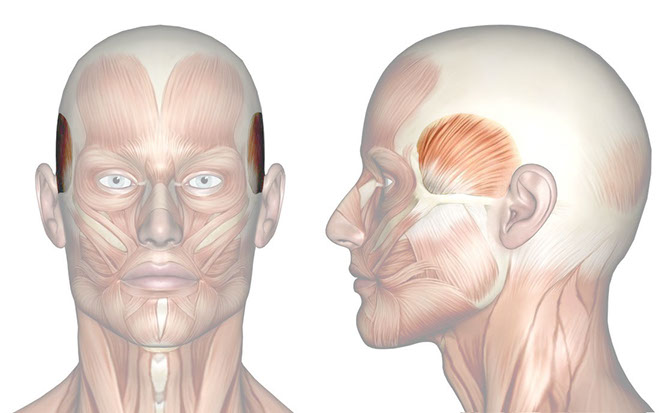
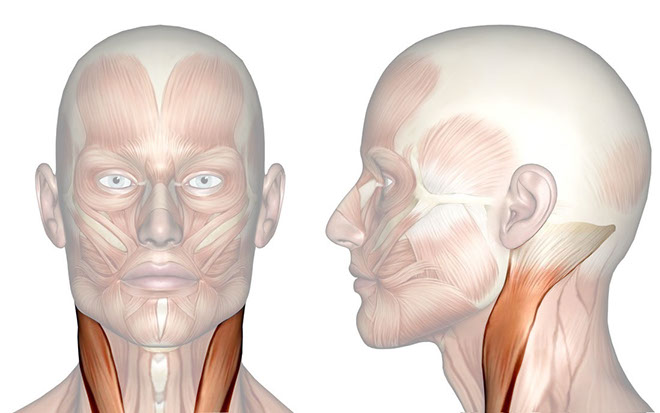
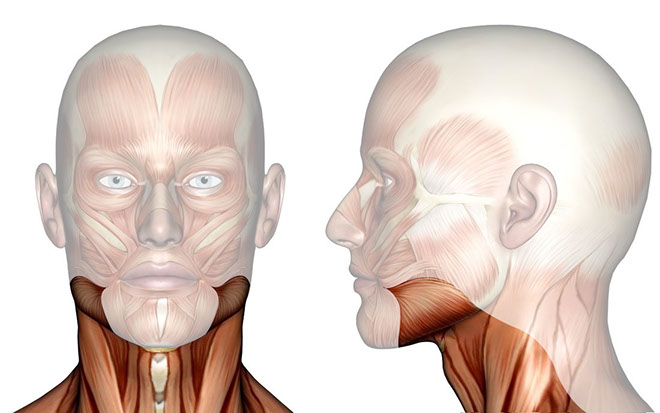
Muscles of the face
Frontalis muscle
Musculus epicranii venter frontalis
Corrugator supercilii muscle
Musculus corrugator supercilii
Procerus muscle
Musculus procerus
Orbicularis oculi muscle
Musculus orbicularis oculi
Nasalis muscle
Musculus nasalis
Depressor septi nasi muscle
Musculus depressor septi nasi
Levator labii superioris alaeque nasi muscle
Musculus levator labii superioris alaeque nasi
Orbicularis oris muscle
Musculus orbicularis oris
Zygomaticus minor muscle
Musculus zygomaticus minor
Zygomaticus major muscle
Musculus zygomaticus major
Buccinator muscle
Musculus buccinator
Risorius muscle
Musculus risorius
Levator labii superioris muscle
Musculus levator labii superioris
Levator anguli oris muscle
Musculus levator anguli oris
Depressor anguli oris muscle
Musculus depressor anguli oris
Depressor labii inferioris muscle
Musculus depressor labii inferioris
Mentalis muscle
Musculus mentalis
Masseter muscle
Musculus masseter
Temporal muscle
Musculus temporalis
Sternocleidomastoid muscle
Musculus sternocleidomastoideus
Platysma muscle
Musculus platysma
<
>
Face anatomy
It is not quite right to associate manifestations of age-related changes on the face with overall aging of the entire body. The nature has not provided us with a model we should match. What really happens to our face, what are the processes affecting our appearance?
In this section, we provide a summary of real causes of age-related face changes: deformation of subdermal face framework structures and of their outer envelope – the skin. A global change in these proportions distorts facial features and causes wrinkles.
Why we are getting old
Getting old is not foreseen by the nature. There is no information in our genes about how we should look in certain periods of life. Each individual’s aging is rather genetically programmed weak links in the body systems. Many things depend on ourselves, too: on the level of our knowledge, attitude toward one’s health and healthy lifestyle. We have a chance to look much younger than today’s generally accepted social standards. The face is one of the main indicators of the age, but it is not right to associate manifestations of facial age-related changes with the overall body aging. Our specific look and individual face features are not determined by the skin at any age; rather, they depend on the shape of the skull and muscles, points of their attachment to bones and skin joints, on the thickness of the subcutaneous fat tissue, etc. In other words, they depend on all this framework covered by skin. And all this system is aging, too: the skull shape changes, muscles atrophy and get dry, capillaries spasm, ligaments sprain…
According to research data, there are five key face aging types: in the first, soft tissues of the face lose their elasticity; in the second, the faces get covered with a net of wrinkles, like a baked apple; in the third, the faces in their old age get deformed beyond recognition; the fourth is a mixed type; and the fifth get old later.
With aging, our skin becomes thin and oxidized, it loses the necessary amount of subcutaneous fat tissue, collagen and elastin. The physiology, genetic predisposition, age, lifestyle, nutrition, climate, photo aging, smoking, free radicals, skin care, as well as excessive facial mimicry result in wrinkles and other indicators of the face aging. Expensive creams with bio additives, such as collagen and elastin, placenta and hormones, are not able to stand long against the aging process.
The skin is the most superficial organ coating underlying structures and muscles. And the state of the muscles doesn’t only depend on the state of capillaries, but also on the nerves that innerve such muscles. Moreover, mimic muscles take active part in the blood circulation system and in the activity of our brain. Thus, the normal function of capillaries, the supply of all nutrients with the blood, and the work of nerves should be maintained, so that the muscles remain always young, and the bands elastic.
Mimic muscles are characterized by their high responsiveness to emotions. By their nature, they are vulnerable and stress-sensitive. Therefore, one part of the muscles is hypotonic, and the other is mainly hypertonic, which results in folds, lines and wrinkles. This is evidenced by Botox injections: the injection makes the muscle relax, and the lines disappear right away.
Thus, the true cause of most folds and sags on the face is exactly the muscle corset deformation under the skin. The muscle shrinks and shortens, and the skin always follows the muscle to which it is attached. Therefore, each and every individual wrinkle, line or fold has its own causer or a group of them.
The process of facial folding may be exemplified by a jacket. The face skin fitting the muscles is the jacket’s front side, and the muscles are the lining. In case of improper care, the lining will shrink, shrivel, and the cloth will undulate and sag. The same happens to our faces. The increased muscle tone shortens its length and drags the skin from inside, thus forming a fold. Under gravity, the fold sags, resulting in sagged lower part of the face, or “bubbles”, which is typical for hypertonic nasolabial folds in the middle part of the face.
The skin tries hard to maintain the tone and resists the gravity as long as the natural elastin is available; however, the excessive skin remains are not able to shrink after the muscle, so they sag and form folds such as jowls, etc. In most cases, this is due to the increased tone of individual muscles, rather than to the skin itself. Paradoxically, but over the years, the healthy skin almost does not lose its elasticity, but maintains it in a hidden form virtually for the lifetime.
Face rejuvenation shall be achieved by hypertonicity elimination; thus, muscles are relieved from the load and take their original form. In this way, we facilitate automatic rebuilding of all the facial muscles. Weak hypotonic muscles are not clamped by hypertonic ones anymore; they take on the right physiological tension, gain the normal blood supply, and regenerate. It should be taken into consideration that as soon as hypertonicity is eliminated, the face may at first sag slightly: little time is required for the hypotonic muscles to become active and to recover their physiological tone.
Today, Patakara is virtually the sole method in the world to eliminate hypertonicity from face and neck muscles, without any undue manipulation with the muscles. You can find more details about the potentialities of this method in the What is Patakara section.
Expression lines
Expression lines result from constant mechanical bending of the skin; therefore, over the years, the amount of collagen, elastin and subcutaneous fat tissue diminishes. This leads to the squeezing of the interstitial fluid and blood out and up, into the adjacent tissues, which receive excessive nutrients and develop more intensely, thus emphasizing the contrast between the fold and the area around it.
Such lines are formed in the superficial skin layer, deeper ones – in subcutaneous layers. Over time, they progress, crop out to the facial surface, and their deep part in the areas of poor blood circulation does not only form adhesions within the muscles, but also adheres to the bone surface.
The appearance of a line depends on its actual depth. Usually, lines seem to be deeper than they really are, because, in most cases, they lie in a fold of excess skin. As soon as the muscle corset gets restored, the skin tightens, the fold gets smoothed, and the lines become visually thinner as only their actual depth remains.
Mimic muscles are attached to the bone on one end, and to the skin or to other muscles on the other; therefore, as they shrink and shorten, they drag the skin with them. Although the latter tries to resist for as much as the remaining elastin allows, the excess skin cannot shrink enough and sags.
More frequently, lines lie across hypertonic muscle fibers, that is, every line has its causer. Some examples are given below.
- Horizontal lines on the nose bridge are due to the hypertonic procerus muscle (Musculus procerus) and vertical lines between brows – to the spasm of the corrugator supercilii muscle (Musculus corrugator supercili).
- Horizontal lines on the forehead are due to a spasm, that is, shortening of the frontalis muscle (Venter frontalis musculi occipitofrontallis). Visually, they look like lifted curtain’s folds.
- Nasolabial folds as initial «flanges» at the nose wings are always provoked by the hypertonic muscles of its lateral part: the nasalis muscle (Musculus nasalis) and the Levator labii superioris alaeque nasi muscle (Musculus levator labii superioris alaeque nasi).
- Chin lines are due to the spasm of the mentalis muscle (Musculus mentalis).
- Lines in the décolleté area appear due to the thoracic segment contracting toward the center, due to slouching or to the habit of sleeping on one’s side . The décolleté skin is thin and has few oil glands. To eliminate the lines, blood microcirculation needs to be restored in the décolleté area which will then be supplied with adequate nutrition..
Creases are formed in areas of high mimic activity as a result of constant mechanical traumatization. Throughout the lifetime, the same fold is repeated again and again in the points of muscle blocks connection. A crack which blocks the normal blood supply to the area is formed. This process always develops inside, in deep tissue layers, and can be observed as early as in the teen age.
The net of wrinkles, lines and folds on the face also reflects the person’s health condition. The skin is tied with all organs and systems: vessels, internals, central nervous system, endocrine glands… For example, the condition of our intestine, its blocks are reflected in the forehead area as horizontal lines. By removing the lines physiologically, we revitalize and rejuvenate the entire body.
Swollen face
It would have been much simpler, if the swelling did not get in the way in the matter of our beauty restoration. All the rugged skin geometry is caused by hypertones, that is, bone-muscle blocks, and then by excess fluid due to vascular blocks. Removing the muscular hypertone is not that difficult; however, the swelling problem is quite complicated. Everyone who suffered from it and who tried to do something to minimize its consequences knows it.
Those people whose fluid is stacking evenly all over the face, may look pretty youngish till a certain moment, due to overall puffiness and pastosity. But after the age of 40, their tissues get tired of holding all this unbearable load of water and sag dramatically, showing up lots of holes and pits on the face.
Lymphostasis and venostasis
The human lymphatic system may be divided into two parts: the head’s system and the body’s system; they are counter-directed. Moving from the body, the lymph goes bottom up, while from the face, vice versa, it goes top down. The both flows meet in the thoracic section, mainly in the left venous angle.
Swollen face and body are often due to systemic diseases of kidneys, heart, spleen, etc. Aesthetic problems of a healthy individual may be reduced to one formula: fluid inflow to the face exceeds its outflow from the face. The cause is that the venous and the lymphatic fluids are retained in the facial tissues and turn into swells: bags under the eyes, heavy eyelids, hernia, nasolabial folds, double chin, rugged areas and pits.
The fluid is discharged through collaterals, lymph vessels and nodes. If they fail to manage the increased load and are clogged with waste, then the tissue-venous fluid is accumulated in the points where the ducts are blocked. In the areas of eyes, nasolabial folds, cheek, chin, under the oval – lymph nodes are everywhere. And if these points are swollen, this means that the lymph nodes do not work.
To make matters worse, the lymph nodes suffer even more from chronic inflammatory processes in the sinus cavity, forehead, teeth and upper jaw. Swollen eyes, shapeless bulb nose, pastous smooth forehead without lines are more often caused by such diseases as: sinusitis, ethmoiditis, maxillitis, namely due to chilled frontal and maxillary sinuses. Even ordinary chronic colds, nasal congestion and tonsilitis also gradually worsen the function of our facial lymph nodes.
Often, facial swelling is associated with brain swelling. Besides the lymph system, there is a venous outflow system in the head as well. The venous stasis, or venous stagnation, is defined in the classic medicine as the superficial, moderate, substitutionary hydrocephaly – disturbed blood outflow from the brain or excessive blood production. Disturbed spinal fluid outflow from the skull is either an evidence of serious diseases, or an indicator of dysfunctions which are displayed in the facial aesthetics.
As the medicine began to widely use the magnetic resonance imaging method, it turned out that the venous stasis as a syndrome is present in more than half of the population, as it may be associated with even minimal cerebral dysfunctions, which affect almost everyone. These latter do not restrict one’s working ability; however, they often deteriorate one’s appearance considerably: bloated face, thick spongy skin, swollen eyes, eye hernia, fleshy brow ridges. Often, the excessive eye prominence is caused by a venous stasis of the orbital area, rather than by the genetics.
Skin stretching
It may be said without exaggeration that the myth of skin stretching is groundless. In most cases, the nature tries hard to adapt to every situation by any available means. Even with complete exhaustion of physiological resources, it fits in with the new proportions. The skin is subject to constant natural lifting even under shortage of required elastin and collagen. And only serious factors provoked by the man or by the environment may disrupt this rule of life.
The destruction is caused by the man, not by the nature. Only the human being is able to sabotage the renovation process of their own body, thus increasing, willingly or by ignorance, the adverse impact of negative factors. Even with considerable interior reduction and degradation of facial tissues due to mechanic manipulations, e.g., use of any cream of petrochemical origin, our skin does its best to evenly coat the bone and muscle corset. The amount of elastin fibers allowing the skin to tighten and to fit the underlying muscles closely is determined genetically by the nature. Therefore, every individual will react differently. Weak links in every individual’s genetics are manifested differently. In some people, serious deformations do smooth out, others get wrinkles and lines, and some get sagging folds. The latter happens when our skin cannot withstand the battle and surrenders. The tissue swelling problem leads not only to the loss of elastic properties and stretching of the skin, but also to the change in the skin structure due to intoxication.
Forehead
The emotional state is directly reflected in the forehead area clamps. Horizontal lines on the forehead are the result of a spasm, that is, shortened frontalis muscle (Musculus epicranii venter frontalis). The lines, in turn, disturb the blood circulation in the forehead skin whose condition gets worse over the years. High intracranial pressure, vegetovascular dystonia, migraines – all these symptoms are associated with the frontal muscle hypertone. Frontal muscle relaxation allows not only getting rid of lines and wrinkles, but also improves the state of one’s health.
Expression lines lie across the spasmed muscle. It can be explained using curtain folds as an example: the cloth lifts as it contracts. Forehead lines are formed in a similar way.
Frown lines
Horizontal lines on the nose bridge appear due to the hypertonic procerus muscle (Musculus procerus)which is interconnected with the frontal muscle. With overall frontal muscle lowering, the procerus muscle sinks as well, forming folds and horizontal lines. The habit to frown leads to the formation of vertical lines between the brows due to corrugator supercilii muscle hypertone (Musculus corrugator supercili). These lines are laid in the skin across its fibers.
To remove the frown lines, reducing the hypertone of appropriate muscles is not enough – a comprehensive approach is required. Only comprehensive work with the forehead and nose bridge area, and adjusted brow line will make the complete elimination of both horizontal and vertical lines possible.
Eyes
Wrinkles around the eyes are partially provoked by ourselves: through squinting, myopia, other static mimics, and even through a habit to sleep on one’s side. But the appearance of your eyes doesn’t result from skin fading only. The facial bone and muscle system as a single biomechanical structure always responds to any change in it; therefore, the deformation of any one muscle involves the others. The age-related degeneration of the orbicularis oculi muscle (Musculus orbicularis oculi) and the behavior of adjacent muscles contribute to the visual depression of the eye.
As far as the orbicularis oculi muscle itself is concerned, its degeneration, like the degeneration of all orbicular muscles, follows the principle of a photo camera diaphragm contracting. Its “blades”almost always contract along the upper eyelid toward the internal angle of the eye, and along the lower eyelid – toward the external angle, drawing the neighboring tissues into the center. In case of a particularly strong deformation of the orbicular muscle of the eye, the eye cut diminishes considerably as well – eyes somewhat drop inside. The reduced muscles surface results in excessive skin – the upper eyelid skin begins to sag, folds or “crow’s feet” appear.
If the skin on the lower lid is tightly pressed against the muscle, wrinkles will form on it. Due to poor lymph drainage and constant presence of excessive fluid between the eyelid skin and the muscles, “bags” will appear.
Peripheral muscles deteriorate the look of our eyes as well. The spasm of the nasalis muscle (Musculus nasalis) results in upper nasolabial folds, provokes elongation of the nose ridge, leads to visual depression of eyes and nasolacrimal sulcus deepening. As a result, the eye looks even more sunken, due to a shade in the nasolacrimal sulcus area. If the lateral nasal muscle gets relaxed, the nasolacrimal sulcus and the dark lower eyelid area will be instantly gone in a magic way.
Nasolabial folds
Nasolabial folds are virtually always displayed in the upper part of the face – at the nose wings, and tend to grow and elongate, turning into lower sags— jowls, «dog’s cheeks», «bulldog’s cheeks».
In the formation of nasolabial folds, a big group of muscles is involved. It is easier to explain the causes of deformations if this trouble zone is divided into three sections: upper, middle and lower.
The upper sags (“flanges” near the nose wings) are due to a spasm of the dilator naris muscle (Musculus dilatator naris) and to the hypertonic levator labii superioris alaeque nasi muscle (Musculus levator labii superioris alaeque nasi), which is partially interlaced with the nasalis muscle (Musculus nasali).
The spasm of the lateral nose part results in the shortening of the nose’s lateral side, which contracts toward the eye, becomes covered with cartilage and fat tissue, and creates a protuberance, a prominence. This spasm results in not only hypertonic nasolabial folds, but also in eyes depression and shortened lateral sides of the nose – the nose seems longer and looks like a beak.
The major and minor zygomaticus muscles (Musculus zygomaticus major y Musculus zygomaticus minor) are attached to the cheekbone and are interlaced in the mouth angles. In case of hypertone, they are contracted and shortened: excess skin is in place, which sags and forms the nasolabial folds.
Lower sags are formed mainly due to the deformation of the four muscle structures:
- buccinator muscle (Musculus buccinator),
- depressor anguli oris muscle (Musculus depressor anguli oris),
- depressor labii inferioris muscle (Musculus depressor labii inferioris),
- and mentalis muscle (Musculus mentalis).
Their imbalance results in folds and lines in mouth angles, chin and at the jaw arch, as well as in «dog’s cheeks» and «bulldog’s cheeks».
Lips
The orbicularis oris muscle (Musculus orbicularis oris) has a strong counteraction and mutual influence with all interlacing muscles, which are virtually all muscles of the central part of the face. Wrinkles around the lips appear due to the spasm of the orbicular muscle of the mouth.
The orbicular muscle of the mouth is tightly tied with the skin; it cannot be torn off and straightened. The degeneration of the orbicular muscle leads to the mouth depression, thinning of the lips’ mucous membrane, and it plays a key role in the formation of “jowls”, lowered mouth angles, as well as various folds and wrinkles below it. These defects become noticable when, with aging, the orbicular muscle of the mouth contracts toward the center and shuts like a photo camera diaphragm. The muscle’s fibers curl in its periphery, making tissues contract toward the center and form lumps, especially in the mouth angles.
The orbicular muscle of the mouth looks like a flat muscle plate with two layers: the deep layer and the superficial layer. The deep layer’s muscle fibers are positioned radially toward the center of the mouth – this is exactly the direction along which lines and wrinkles are formed. The superficial layer consists of two arch-formed bundles passing along the upper and the lower edge of the mouth. Therefore, over the years, the orbicular muscle of the mouth rolls, forming a tube and leaving only thin fading threads of the lips.
The orbicular muscle of the mouth is an important psychosomatic zone of the body. More often, its deep spasm is associated with the dysfunction of other orbicular muscles of the digestive system. Therefore, the recovery of the orbicular muscle of the mouth will make the intestinal activity considerably easier and will improve the psychosomatic wellbeing.
Jowls
Sags in the buccinator muscle (Musculus buccinator) area, also called “bulldog’s cheeks”, are due to a complex disorder of the skull biomechanics. The cheek muscle may be compared to a canvas stretched onto a frame. Our face looks young when the “canvas” is stretched evenly.
In the periphery, the cheek bone is attached to the upper and lower jaw bones. Somewhere in the middle of the face, it interlaces with the orbicular muscle of the mouth and lips. Because of age-related bone and muscular deformations, the interior of this “cheek frame” is contracting.
Due to a spasm, the masseter muscle (Musculus masseter) is displaced from the jaw angle and approaches the center of the face and the chin section. In the young years, it looks like a prominence near the mouth angles. Over the years, due to spasms of mastication muscles, the cheek muscle is hypertoned and contracts from inside, dragging tissues toward the center leaving extra skin on the exterior part of the orbicular mouth muscle. This skin sags and forms “bulldog’s cheeks”. Visually, this sagging looks even clearer due to the spasm of the depressor anguli oris muscle (Musculus depressor anguli oris) itself which results in lowered mouth angles.
Jowls are not only of the upper, but also of lower nature. The most superficial part, the platysma muscle (Musculus platysma) grows up into facial muscles, often up to cheek muscles. Neck fasciae are connective tissue membranes coating the muscles. They are tied with thoracic section and abdominal cavity fasciae. Age-related posture deformation almost always results in the neck fasciae drawing deep inside and dragging the “bulldog’s cheeks”, tissues and the entire lower part of the face.
Overstressed neck and twisted muscles result in flattened blood and lymph vessels. This leads to the fluid accumulation and pastosity of facial tissues which, in turn, emphasize the jowls. Professions in which the face is constantly in the downward position worsen the problem – the venous outflow of tissue fluids deteriorates, and the law of gravitation comes into effect.
Jaw line
Most young people’s faces have a beautiful jaw angle. According to ideal face proportions calculated by Leonardo da Vinci, the distance between the lower lip and the chin should lie on the same horizontal line with the lower jaw angle, which is 100-110 degrees. The older the individual, the more the jaw loses its so called “youth angle”. This is caused by muscle deformation, which changes the facial features; for example, forming deep lines, creases and sags that often makes the face unrecognizable.
There are three different aging types. Any of them involves deep deformation of muscles, bones and tissues. These changes define our face.
Mastication muscles — masseter, pterygoid and temporal muscles — are attached to the bone with both ends, joining the lower jaw with the upper one and ensuring the function of the jaw joint. Over the years, these muscles get cramped and contract, lifting the lower jaw toward the upper one and making it sag in the chin area, which, in turn, changes the jaw line inclination angle. Such change in the jaw position causes the overall inversion of facial proportions, and the face lengthens. Soft tissues lose their support and sag; over time, the face oval loses its clear outline.
This first aging stage involves 70 % of people and shows up as soon as in the young years. The key cause of the mastication muscles spasm is stress-related. Typical features of the first type will also be deep-set eyes, a small mouth with thin lips, and a curved forward chin.
In the second aging type, mastication muscles undergo an inverse process – they are stretched rather than spasmed. In this case, the lower jaw comes forward, the chin is “twisted” toward the nose even more. In case of typical age-related cervical spine problems, such as hyperlordosis, the upper part of the face is aimed at the lower one even more, the nose tip aims at the chin, the mouth drops inside, the wing part of the nose gets spasmed and either lengthens visually and sags, or squashes the nose. The face features look somewhat “predatory”. This type prevails among men rather than women. In the second type of aging, sags and lower nasolabial folds are milder.
The third type is mixed. Abnormal bite, underdeveloped jaw length etc. will also determine the aging type.
Neck aesthetics
It may be said without exaggeration that our face begins with the neck. A beautiful neck makes the face look noble. The neck is the first to show up our age. But young skin is not always the reason to have young-looking neck. It is rather its right set, that is, its physiological curve.
Over the years, our spinal column becomes deformed, shrinks and changes its statics. As a result, a small physiological curve becomes exaggerated, cervical vertebrae drop inside, intervertebral discs flatten, the neck becomes shorter, which results in a deformed cervical spine – hyperlordosis. As a consequence, folds and furrows appear on the lateral surface of the neck, the skin sags and forms a “turkey neck”, or, alternatively, a big amount of fat is deposited on the chin – even with no excess weight, the face outline becomes unclear.
Spasmed cervical vertebrae may result in blood flow disorder. Regular headaches, dizziness, heaviness in the back of one’s head, and noises in the head are symptoms of the cervical spine osteochondrosis.
Our face’s youth is the muscle tone and the skin tightness, and it depends directly on the blood circulation in the cervical spine. By taking proper care of the latter, we can neutralize, mitigate, and delay the failures and disorders in the function of the central nervous system that were programmed by nature.
The cervical spine’s condition depends, in turn, on our posture – on how we are used to holding our back and head. Ultimately, our face depends directly on our body.
Skull shrinking
Our skull consists of 29 bones — this is a rigid basis, support and framework holding the entire muscle structure. The lower jaw is the only actively mobile bone of the skull. Like all bones in our body, with aging, the skull bones are subject to shrinking, and the skull tends to lose its volume. This reduction is especially noticeable in the center of the face, where typical nasolabial folds are formed. The skin tends to shrink all the time, and, consequently, the skull is deformed and losing its volume, weight and moisture level. With aging, the skin becomes unable to ideally adapt to the deformed muscle geometry on the skull surface. As a result, excessive skin which is not able to shrink sags down and forms folds.
Besides the middle part of the face, the same happens to jaw bones affected by the lockjaw. When blood is duly supplied to a muscle, the bone to which it is attached maintains its elasticity, moisture and volume; while the lockjaw has a huge adverse effect upon the jaw, leading to its resorption.
Mastication muscles, like all skeletal muscles of the body, are attached to bones with two ends. With aging, these muscles get deformed, as, being involved in complicated motor processes of chewing and in the facial gesture, they are constantly stressed, compressed or stretched. The mandibular angle itself changes, too, as well as the length and height of the jaw’s body. The lower jaw is the main bone of the face; any change in it will affect the overall appearance of a face, changing the face shape. Exteriorly, this is manifested in slacker outlines of the lower part of the face: soft tissues sag down, the oval becomes unclear, the cheek, chin and neck tone decreases. As a result, the typical “aged” look appears.
The skull volume, like brain function, directly depends on the work of mimic and mastication muscles. They should work according to the physiology which means in a natural way. Any forced muscle building training will only lead to increased hypertonicity (blocks), which prevents normal blood supply to skull bones, thus favoring their shrinking even more.
In the above articles, the material from the book called «Face Fitness» by N.B. Osminina is partially used.
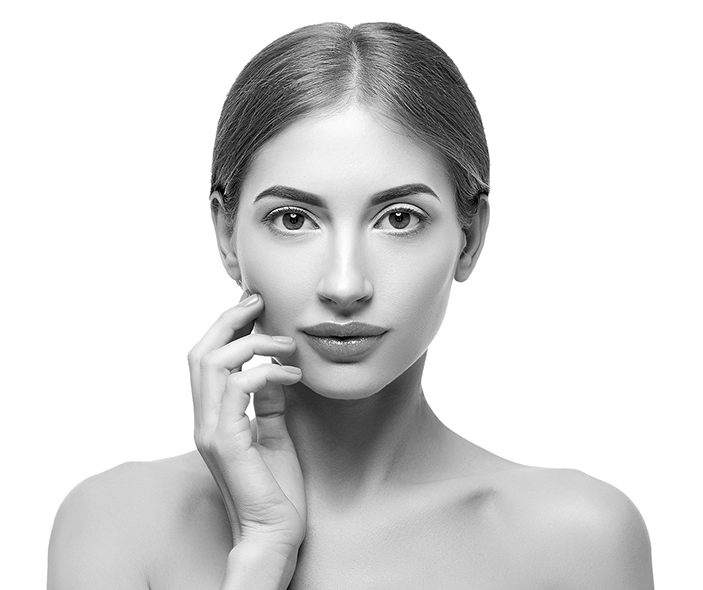
Scientific research on Patakara
Patakara Product Information
All the information to help you
choose the right Patakara.
Patakara Science
Learn about the science to how Patakara can improve your well-being
Real-life Cases
Learn about how people have benefitted from using Patakara
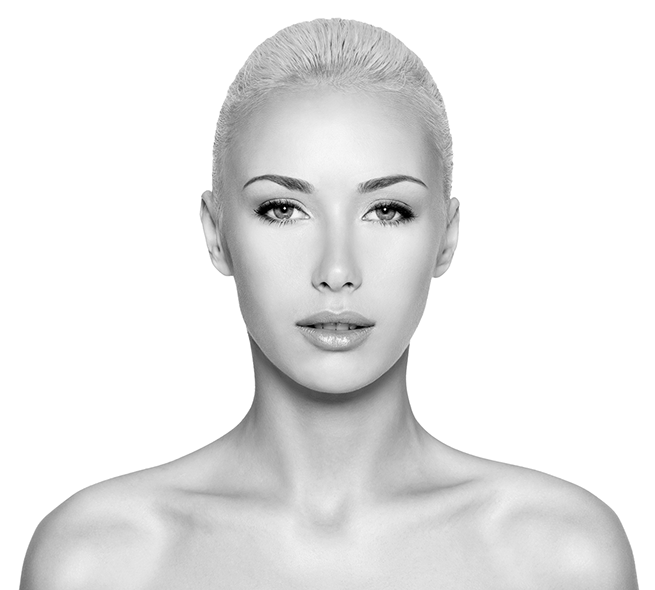
Results of Patakara exercises
With the Patakara face trainer, it is quite real to look a couple of years younger! 15 minutes a day is enough to achieve impressive results.
On this page, you can view photos and read stories of people who have successfully used the Patakara. We have broken them down by continents and further – by countries, as every nation has its special cosmetic pattern: skin color and density, light sensitivity, jaw shape, eye shape... For example, faces of Latin or oriental type, due to the thickness and elasticity of their skin, achieve visible results faster than others, but they should make efforts, too.
The list will be completed gradually, as soon as new photos are received from our users. Look, be amazed, admire!
Share your joy!
If you exercise with Patakara — please share your impressions with new users and with those who want to become a user. Report how comfortable the exercises are, how many times a day you exercise, why you have decided to use the Patakara, what do you want to accomplish, and what positive changes occur in the way you look and your overall health.
Don’t be shy!
We know that not everyone wants to demonstrate their achievements on the Internet. If you feel shy about showing your face completely, you can still send your photos to us. We will make our best efforts to preserve your anonymity — retouch your eyes, and place Patakara.eu water marks all over the photo.
Anyway, contact us at: contact@patakara.eu.
Please provide at least two photos: one taken immediately before the beginning of the training, the other - after a while. Please, before you do this, go to the "Before" and "After" photos page, to get a clear idea of the photo standard requested by us.
Legal Notice / Terms and Conditions / Privacy Policy / Cookie Policy
© 2017- 2025 Patakara.eu - Official Patakara Distributor. All Rights Reserved.
ADDITIONAL INFORMATION
SHOPPING
